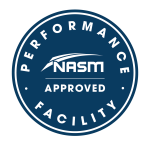Stretching has been a controversial topic and it seems to be one of the most random and inconsistent things seen in the gym, so I would love to share some considerations if you use stretching as part of any of your warm ups or cool downs.
Should you stretch?
Stretching is beneficial for overactive muscle groups. Overactive muscle groups are a little more excited than their opposite muscle group, and lengthening them is a goal. Stretching can help with muscle imbalances and/or faulty movement patterns. The opposite is underactive muscle groups, which are less excited and more relaxed. The goal for these is to strengthen and work on proper activation. You don’t want to stretch an underactive muscle group.
Should one consider dynamic stretching or static stretching, or perhaps both?
Different types of stretching produce a different type of response from the neuromuscular system. Static stretching is a type of stretch where the muscle is passively lengthened to the point of tension and held for a sustained amount of time (usually 30 – 60+ seconds) and dynamic stretching is active movements where joints and muscles go through a full range of motion. There is no “hold” during a dynamic stretch. Static to lengthen and dynamic to activate.
If you have a muscle imbalance, static stretching can be very beneficial following foam rolling. If you are using a static stretch, don’t hold your stretch longer than 30 seconds during your warm up, and always follow your static stretch with some reactivation of your muscle group. The reason for this is that any over stretch can elicit a relaxation response and that is not the goal going into a workout. However, being a little loose rather than overly tight is great going into a workout. Reactivation can include a dynamic stretch or light movements mimicking the movement you are about to perform.
Here is an example of a warm up for overactive hip flexors and underactive glutes that includes stretching.
1 Set of foam rolling, Hold Duration – 30 seconds to 2 minutes (inner/outer thigh)
1 Set of kneeling hip flexor static stretch, Hold Duration – 30 seconds (not any longer)
1 set of standing lateral hip stretch, Hold duration – 30 seconds (not any longer)
1-2 Sets of walking lunges, 10-15 Reps, slow tempo
1-2 Sets of prisoner squats, 10-15 Reps, slow tempo
Should you perform a static stretch before or after a workout?
If you have time to follow a static stretch with proper reactivation, a static stretch of 30 seconds is not likely to raise any risk when included into your warm up. If you make dynamic stretching and proper activation a part of your standards, you will be able to include and experience the benefits of static stretching in your day to day routine. If you don’t see this as a consistent part of your warm up routine, it’s likely more beneficial to leave the static stretching out and perhaps only consider it post workout. If you are not sure if you have any overactive/underactive muscle groups, sticking to dynamic stretching is best.
More examples of dynamic stretches include:
* Prisoner squats
* Multiplanar lunges with reach
* Single-leg squat touchdowns
* Tube walking
* Medicine ball chop and lift
* Medicine ball lunge with rotation
* Push-ups with rotation
* Russian Twist
When context lacks the key elements of postural assessments, noted muscle imbalances, faulty movement patterns, ect of participants this can leave a lot of confusion around the possibilities of length- tension relationships and neuromuscular efficiency. So the benefit of stretching or not stretching can be individualized.


